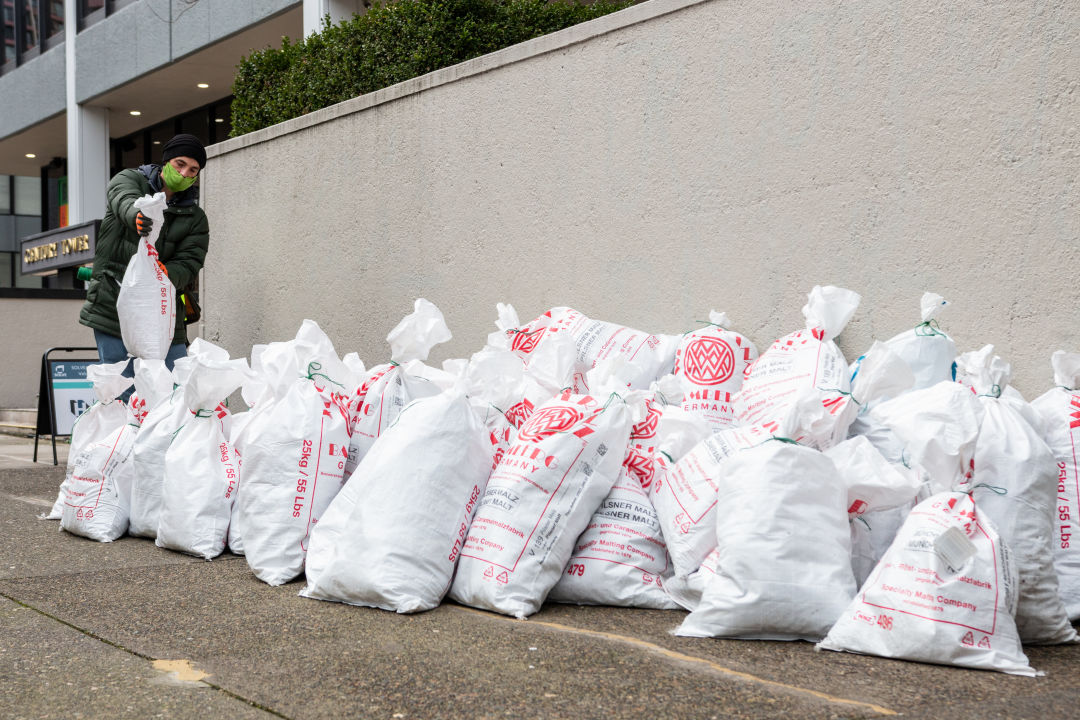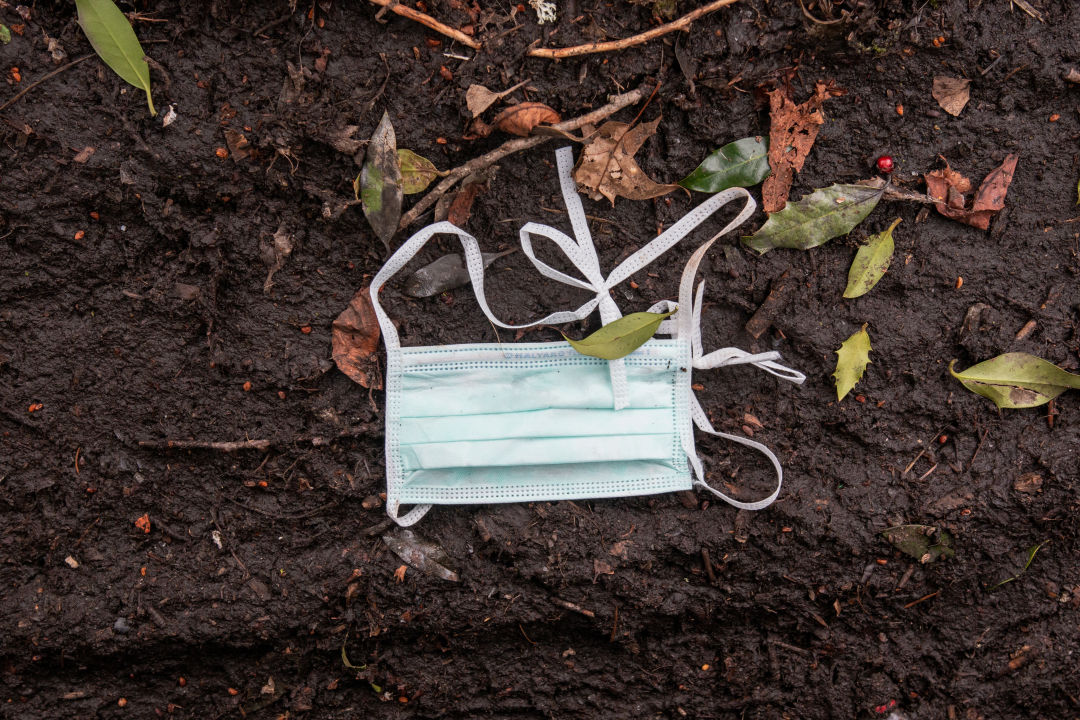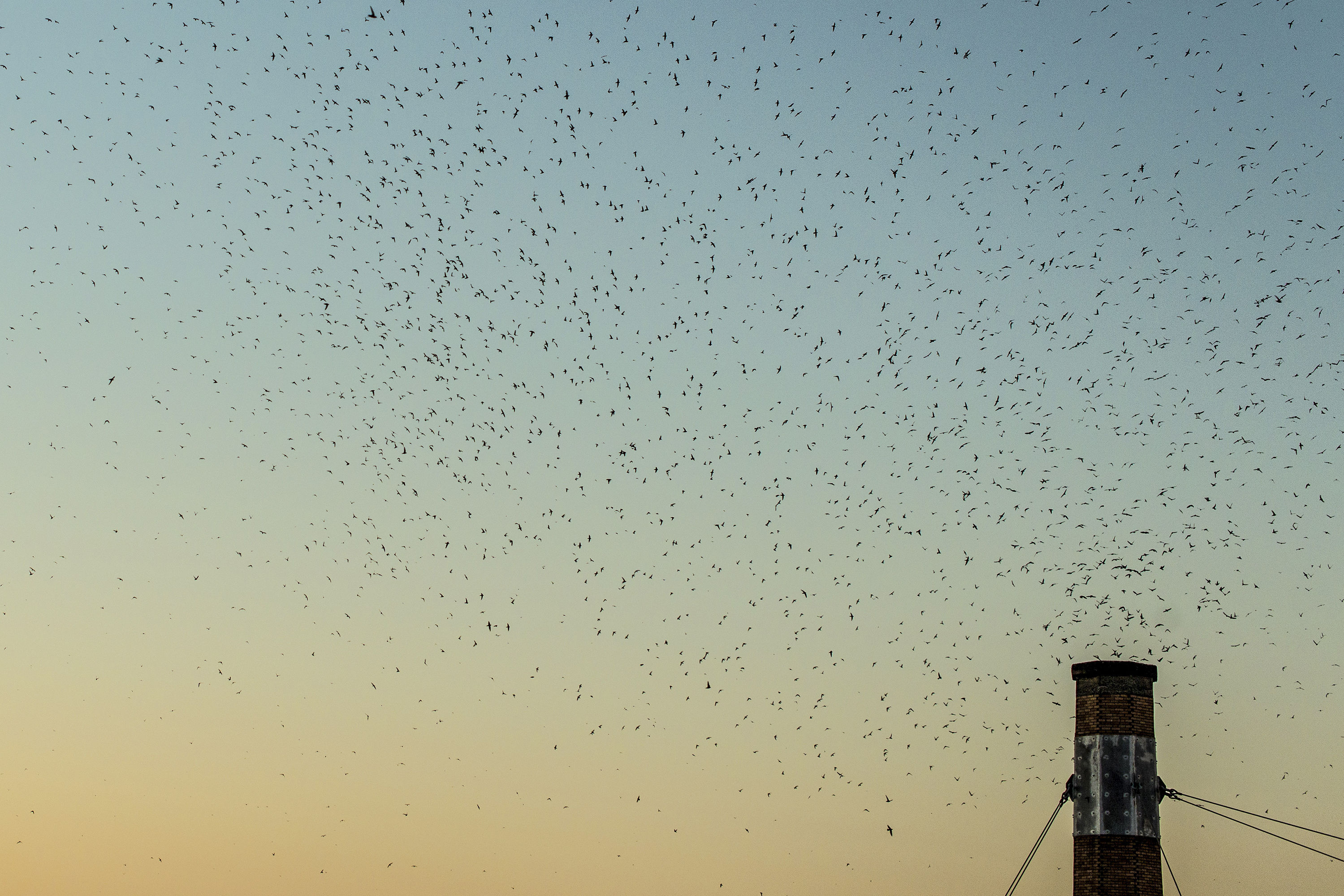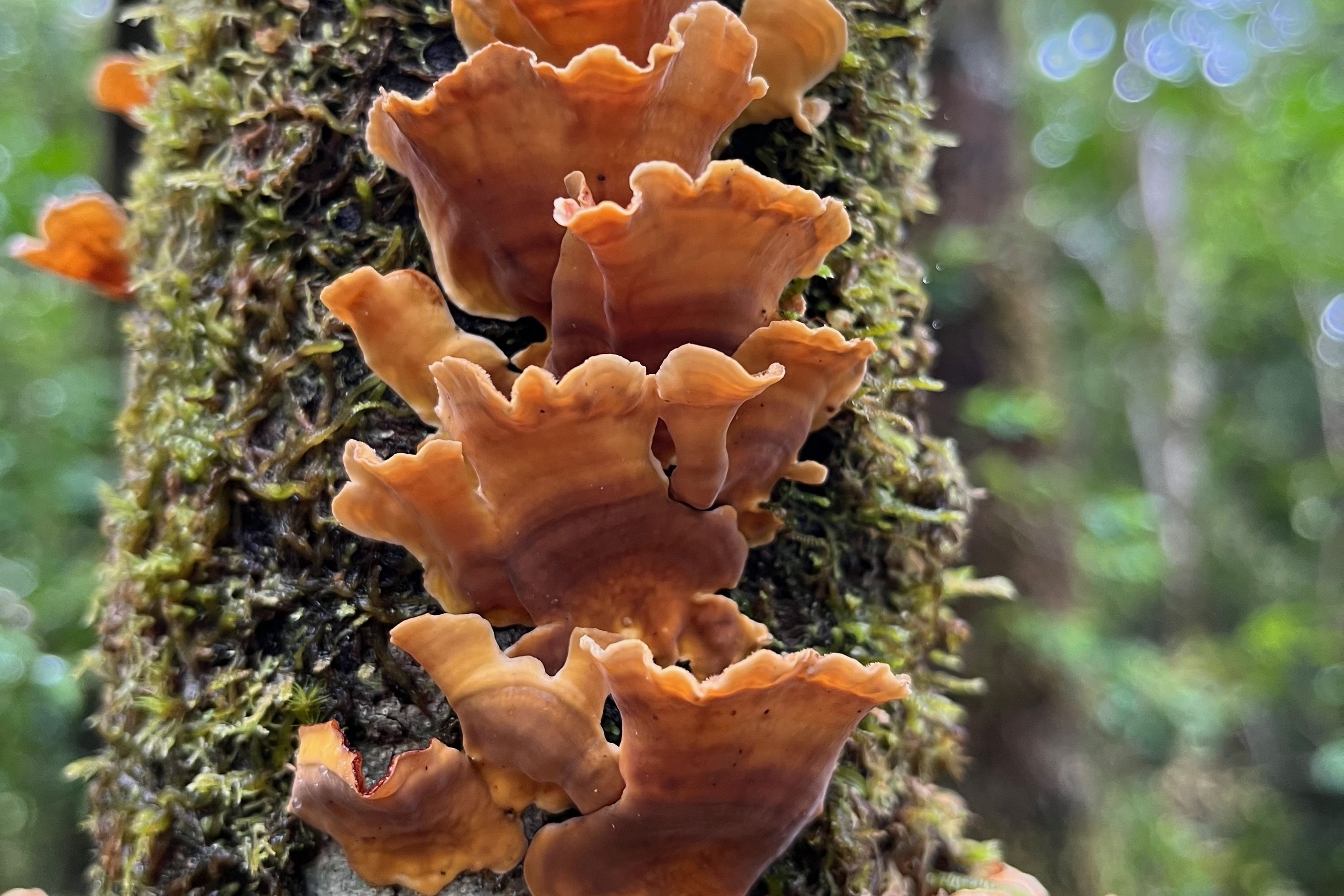PPE and Plastic Waste Are on the Rise. But Cleanup Crews Are Here to Save Us.

A SOLVE worker at a downtown Portland cleanup on Martin Luther King Jr. Day. More than 300 folks volunteered that day to pick up 4,310 pounds of litter and approximately 48,800 cigarette butts from around Portland.
Image: Gabriel Granillo
Picking up trash isn’t all that hard to do. The problem is, it’s even easier not to do it—to rely on the janitorial instinct of someone who cares. Or perhaps you think your tax dollars will pay for someone, somewhere, to clean up the city. Kris Carico, the CEO of SOLVE, an Oregon-based environmental restoration organization, would be the first to tell you that’s not where your taxes go and we all need to pitch in.
“I mean, it's just part of being good community members, taking care of the communities that we live in. And sometimes that means cleaning up messes that we didn't make,” she says.
The organization, founded in 1969 by then Governor Tom McCall as SOLV (Stop Oregon Litter and Vandalism), hosts year-round events focusing on picking up litter, planting native trees and shrubs, and pulling invasive plants from the environment. Every year the organization sees around 30,000 volunteers eager to participate. But during 2020, the year of COVID, things changed.
For the first time in its history, SOLVE had to pause all of its events. From March until June 2020, rather than hosting its own cleanup events, the organization encouraged small, local cleanups among family and neighborhood units. SOLVE stepped in where they could, but it was a time of fear and uncertainty, and Carico thought it was best to play it safe.
Then, the protests started.
After the police killing of George Floyd in Minneapolis on May 25, protests and demonstrations in cities around the country, including in Portland, erupted en masse, aimed at calling out systemic racism, police violence, and social injustices plaguing law enforcement. Carico says volunteers “came out of the woodwork” after the first few nights of protests asking how they could help, and on June 2, the organization jumped out of its hiatus and hosted its first cleanup event since the start of the coronavirus pandemic.
“There was a young woman that came out to one of our first events. She had been out protesting the night before. And she said the reason that she was out is because she really wanted for the conversation to not be about garbage," Carico says. "She wanted it to be about the situation at hand. She wanted it to be about the injustices going on within our communities of color.”

Environmental nonprofits and agencies around Portland and Oregon say they've seen an increase in PPE waste around the state. The plastic from PPE and single-use containers may be harmful to ecological systems.
Image: Gabriel Granillo
The protests weren’t the only reason folks wanted to clean up around downtown. The onset of COVID-19 came with an early silver lining: with less people driving their cars and commuting to work, carbon emissions in some cities had gone down and air quality had improved. But our oceans were a different story. One report estimated that 129 billion face masks and 65 billion gloves were disposed of globally each month. Much of the plastic from that life-saving personal protective equipment ended up in our rivers and oceans. That’s not even including the single-use plastic which have become ubiquitous with restaurants all over the state.
Anecdotal evidence from Chris Havel at Oregon Parks & Recreation points to an increase in take-out containers and disposable masks as the main culprits polluting Oregon hotspots like the coast and popular trails. Havel says the exact number of PPE and take-out waste is difficult to quantify, but “since both of these contain plastic, they can harm biological parts of the ecosystem in and outside a state park and the ocean shore.”
When people flocked to the coast during the summer of 2020, they left behind plastic take-out containers and PPE, but with an underfunded Parks and Recreation department amid the early pandemic, the state was hard-pressed to gather the resources to conduct a cleanup. That’s when SOLVE stepped in.
Not only was it a rallying cry for people to get involved, but it was also a chance to connect with the community, Carico says.
“We are in environmental nonprofit, but we're also community building nonprofit. And right now, that sense of community is vital. And I think people are feeling isolated and not connected to their community,” Carico says. “I see the work that we're doing more relevant now than I think we've ever been.”
Other groups like Downtown Portland Clean & Safe mirror that sense of responsibility and connection. The Downtown Portland Clean & Safe cleaning crew, a program in partnership with Central City Concern’s Clean Start, is small but works every day of the week.
Amy Lewin, vice president of strategic communications at Downtown Portland Clean & Safe, says the crew, made up of folks who are formerly houseless or who have barriers to employment, works mindfully using COVID precautions and takes pride in the work that they do.
“Of any place in our state, of any year that we’ve had, since I’ve been around, this has been like no other,” Lewin says. “And for the those who are providing the basic services, they take that work seriously, and they are proud to do it—extraordinarily so.”
As the city continues to be battered by the ongoing pandemic, as businesses continue to shutter and more folks are struggling to stay afloat, cleaning up around the city, Lewin says, is a meaningful act, a chance to come together for a collective good.
“Not only does it feel good to do the generous and simple act of picking up litter, but to be back on our city streets safely, wearing a mask, connected with a bigger net of people you know who are doing the same thing in that moment together,” Lewin says.




